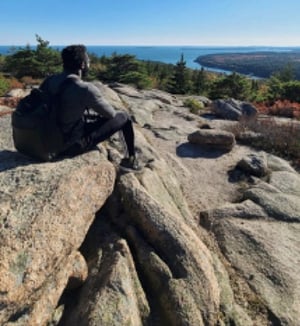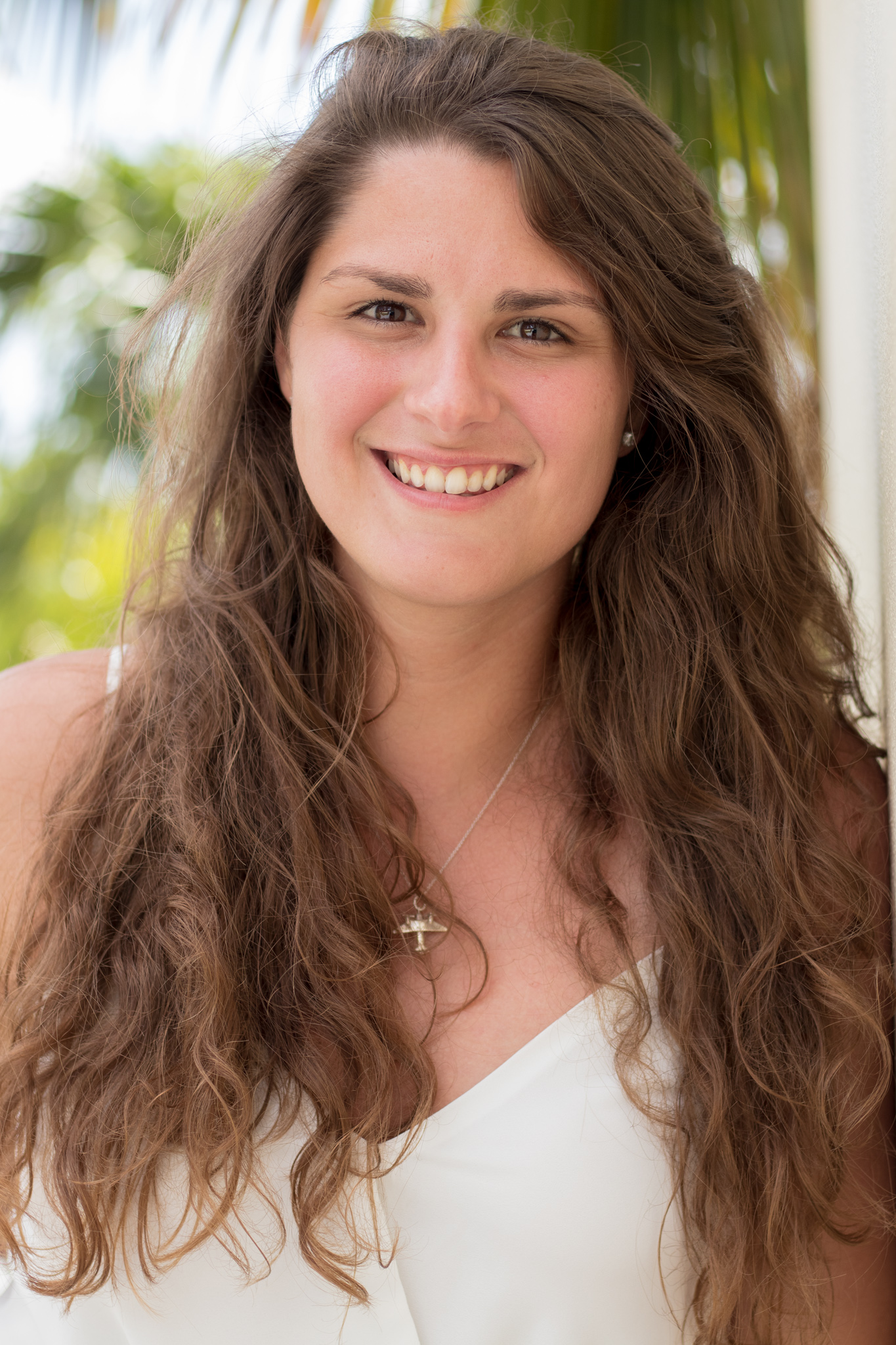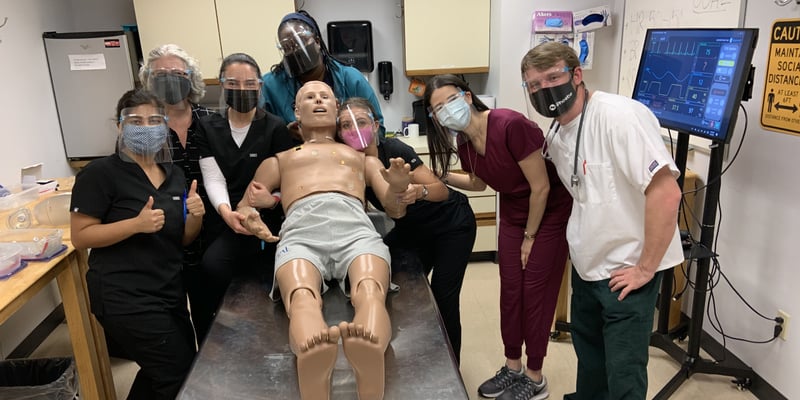2020 has been a year of many things; mostly it's been a time of change. In March, students were informed that the rest of the semester was going to be completed online. A few days after that, they were also informed that the following semester would be online. For students that were EBS 4/MED 3 in March, it left a big question as to what was going to happen to us for our Maine semester. Would we be able to go to Maine? What would be the status of the pandemic at that time? Would the semester be online? How would traveling be in terms of the rate of catching the virus? All of these questions created an anxiety of the unknown for what our future would hold.
Hybrid vs. remote learning
UMHS Students were given an orientation of how ICM 2, the clinical portion of the Maine semester, would be adapted to the current limitations of the pandemic. It was going to be four weeks of online schooling, followed by four weeks of in-person instruction at the Maine campus. As reality is, this did not please everyone. Many students had concerns about traveling during this time as well as an increased cost due the economic state that we were in. Administration took these concerns into consideration and presented us with two options for students to choose from: 1) a Hybrid program with four weeks of online instruction followed by four weeks on the campus in Maine, 2) a remote option, with all eight weeks of instruction online. Giving us the choice between programs that best suited our needs allowed students to feel a greater sense of comfort.
ICM 2 Structure
In the first four weeks of the program, students are given a didactic lecture to review, then the following day there would be case-based learning in the morning, followed by afternoon small groups. These days are alternated with morning iHuman sessions (a virtual game clinic teaching students about asking history questions and learning what physical exams to do) followed by diagnostic testing and diagnosis. In the afternoon, the students would then meet with their small groups to discuss the cases and practice more cases and discuss what standardized patient encounters would be like when we got into the last four weeks of the course.
Student reactions to hybrid & remote learning
When asked about his small group experiences, UMHS student Osvaldo Rivera said, “My small groups' leader was Dr. Deschenes. I honestly really enjoyed the small groups sessions with her as she was very motivating and energetic as a leader. She explained clearly how the semester was going to work from the beginning, and she was very understanding of everyone’s situations at adjusting to a virtual ICM II. She gave really good advice on how to approach SPE’s (student patient encounters) and SOAP notes, while also allowing us to lead case discussions and encouraging us to work with our colleagues. The fact that it was one doctor/leader per eight students made the whole process more personalized, which is really my favorite thing about small groups. If I were to change something, it would probably be the time per session. Sometimes sessions would be over three hours long, and though I know there is a lot to discuss, after having CBL or iHuman patients in the morning, there comes a point where my brain starts to check out. Apart from that, I think that overall small groups were a great experience that allowed for clinical learning and application.”
The first four weeks were the same for every student being remote; the following four weeks is where students would either continue an online education or move to Maine for four weeks. Obviously, each option came with its own challenges, but the thing that was same for those that chose to stay remote or those that chose the hybrid option is that we were all excited and filled with nervousness. Being a remote student was challenging in trying to navigate how to do standardized patient encounters while through a Zoom meeting. The staff were extremely accepting of the students’ situation. Students who were not able to have a practice patient for the encounter would need to describe the exam they were doing and how they we would do it. This being a new aspect to patient encounters because when having an actual patient it may be easier in terms of just performing the exam, but now brings the challenge of articulating what we would normally be physically doing. Both doctors and patients were very accommodating of the fact and would encourage us at the end of the sessions of what and how to improve talking through our techniques.
Those students that had gone to Maine and those that stayed remote had the same curriculum, with the only difference being that those in Maine got to have a hands-on experience with standardized patients and the use of mannequins in the clinical skills lab.
Lujain Qureshi, who chose to do the Hybrid program, enjoyed her experience being hands on.
"I decided to do the Hybrid 4x4 onsite program for which I traveled to Maine," she said. "There was a lot of uncertainty because during a pandemic, the fact that the school gave us an option to do the Maine semester like previous students had done was a great opportunity and I really wanted to take advantage of that. I can proudly say that on my end, it was a great experience. The only reason I decided to do the onsite program was because I wanted firsthand experience learning and practicing the physical examinations on patients so I was ready when the time came for my clinical rotations. From my personal experience, I think it’s difficult to learn how to do a proper systemic physical exam on someone if you are not sure how to orient yourself to the patient; and check for any murmurs or abnormal heart sounds when we auscultate, for example. We learn a lot of theory but the application part is what I got to practice and that was much needed. It was fast paced and we had two systems every week for SPE, but I believe it helped me solidify a lot of the concepts by actually interacting with the patients, taking history, and doing the physical exam. The attending physicians working with us with the SPEs were great help and gave some very effective tips and tricks on how to be efficient during the patient interviewing. The faculty at Maine made sure everyone was safe on the campus and were a great help. I would definitely recommend traveling and taking the opportunity if you are given a chance! It really adds to the learning process."
Advice for incoming clinical students to Maine
 Another student who also chose to go to Maine, Desmond Sackey, had some words of advice for incoming students not only in the clinical setting but also in the beauty of Maine as well.
Another student who also chose to go to Maine, Desmond Sackey, had some words of advice for incoming students not only in the clinical setting but also in the beauty of Maine as well.
(Photo, inset right): UMHS student Desmond Sackey, taking his own advice in exploring & enjoying the beautiful outdoors that Maine has to offer. Photo: Kristen Scholl.
“Maine was challenging and exhausting, but definitely worth it. It was great being able to apply things we have learned and see how things all come together in different clinical settings. The faculty were great guides, too. They wanted to see us succeed and helped us to think outside of the box and expand our skills. Interacting with patients, observing clinicians in preceptorship and working with the SPEs left me feeling confident, not just in what I know, but in the doctor I am becoming. These things also reminded me to be patient with myself. Becoming a great doctor is a continuous process, and over time I will get there. School aside, Maine is a beautiful place. The fall colors, rustic styles and coastal lifestyles create a unique environment. I wish I had more time to explore the state and neighboring communities. There is a lot to see. Overall, Maine was a great experience. I wish I was able to be there the full semester.”
A few tips that Desmond has for those going to the Maine semester include:
- Don’t be afraid to be wrong.
- Ask for help or clarity.
- Treat each virtual encounter like it’s the real deal.
- Go outside and explore.
With the pandemic there are plenty of challenges that we all face as students, future physicians, and individuals. UMHS has provided us in the Maine semester with ways to feel comfortable during the pandemic in the fact that we can continue our education, whether that be in the comfort of our home feeling safe, or for those that desire that hands on experience despite the circumstances. UMHS made everyone feel comfortable for those that went to Maine in taking the appropriate measurements to ensure that everyone was able to learn in a safe environment. With the whirlwind that has come from the pandemic it is comforting to be able to continue our learning process and to continue to take the steps to become better physicians for the future.
(Top photo): Several students (Lujain Qureshi, Lindsay Weinderg, Jamie Egbele-Eddie, Claudia Barrios, Lucia Prieto Villegas & Colton Sellars) gathered around "Harvey" with Dr. Stevens, ready to practice their clinical skills. Photo: Kristen Scholl.

Kristen Scholl is a second-year UMHS medical student who has interests in orthopedic medicine and sports medicine. She is also a senior UMHS Media Ambassador in St. Kitts.
















